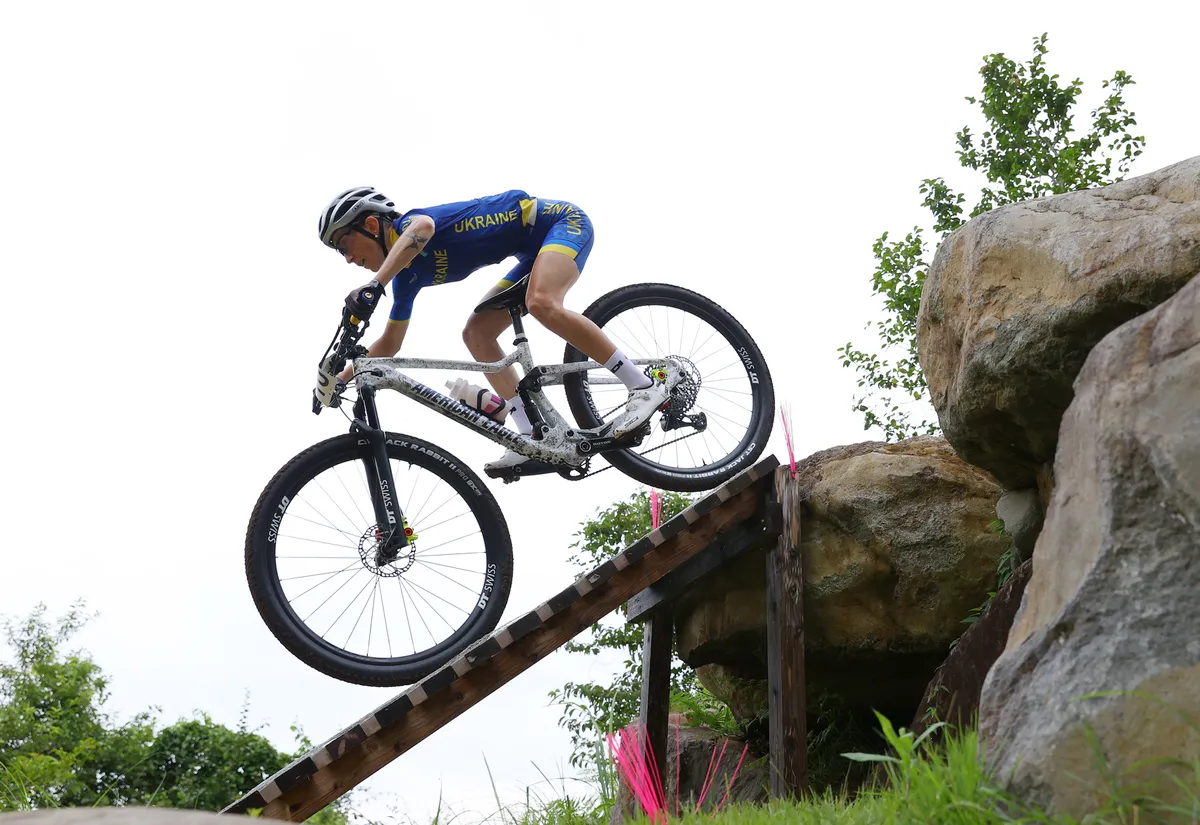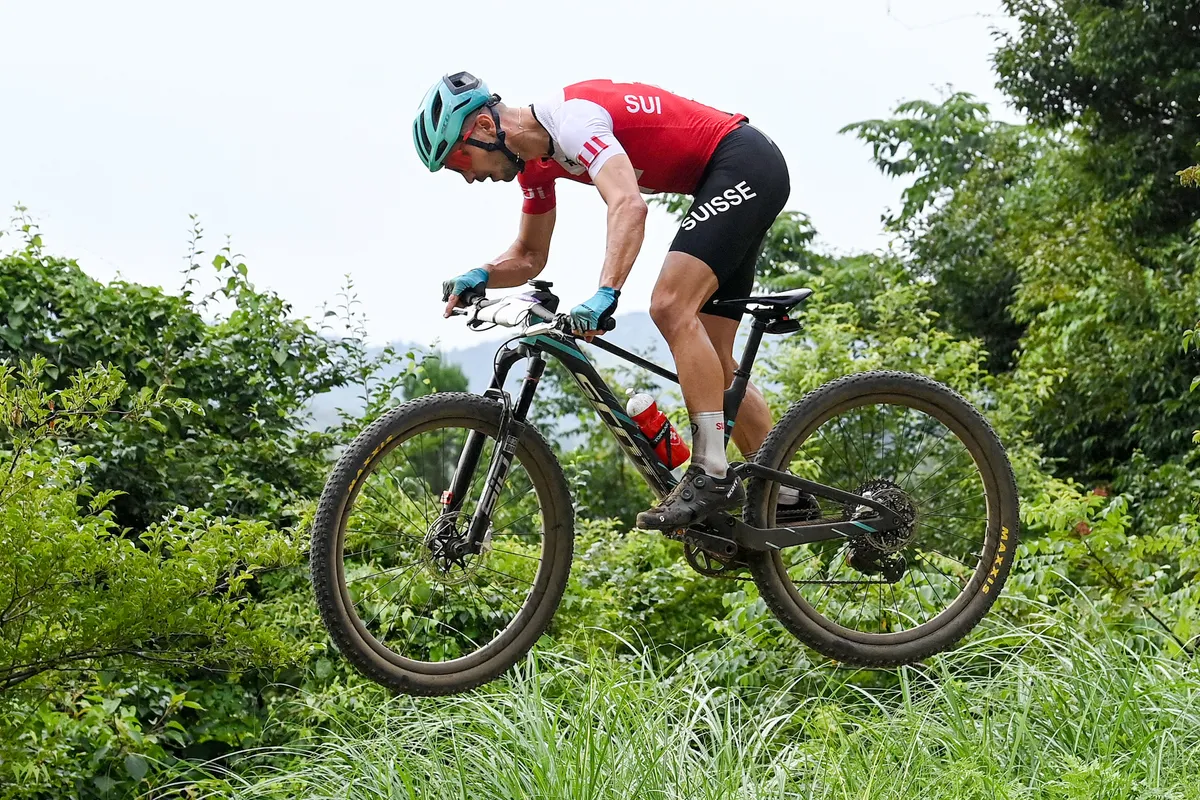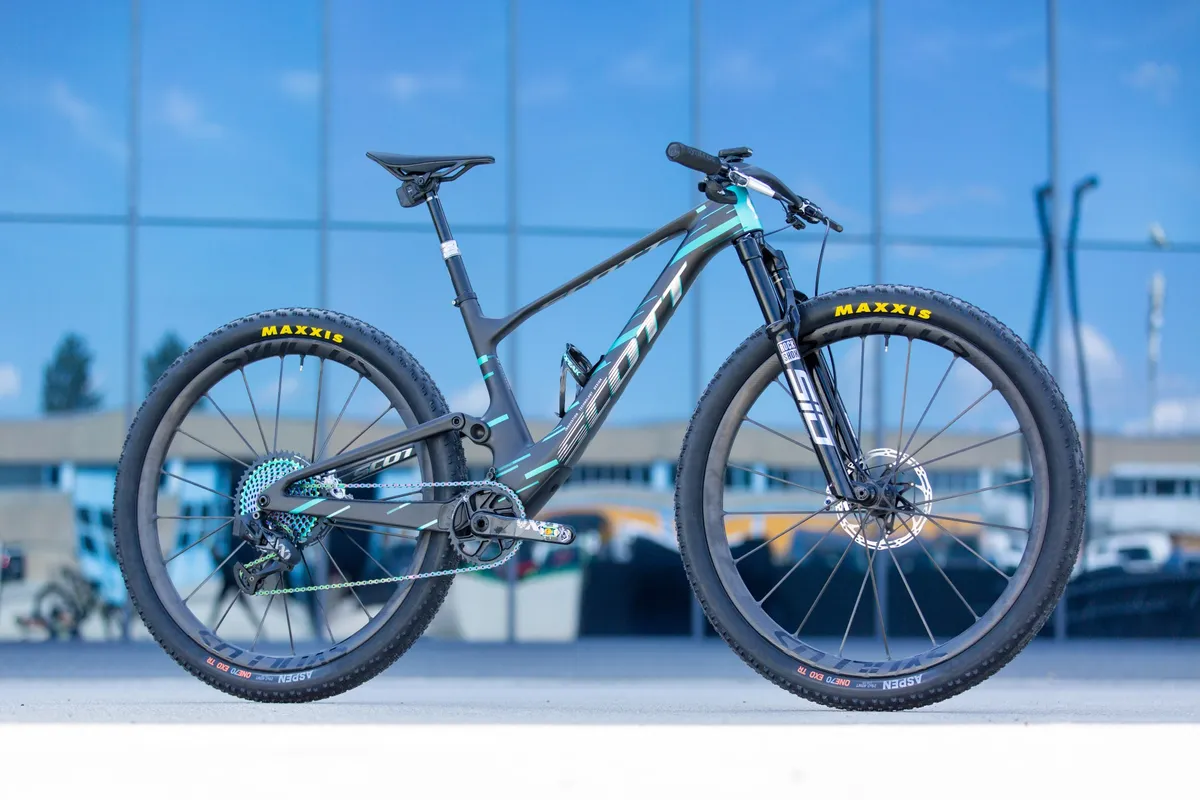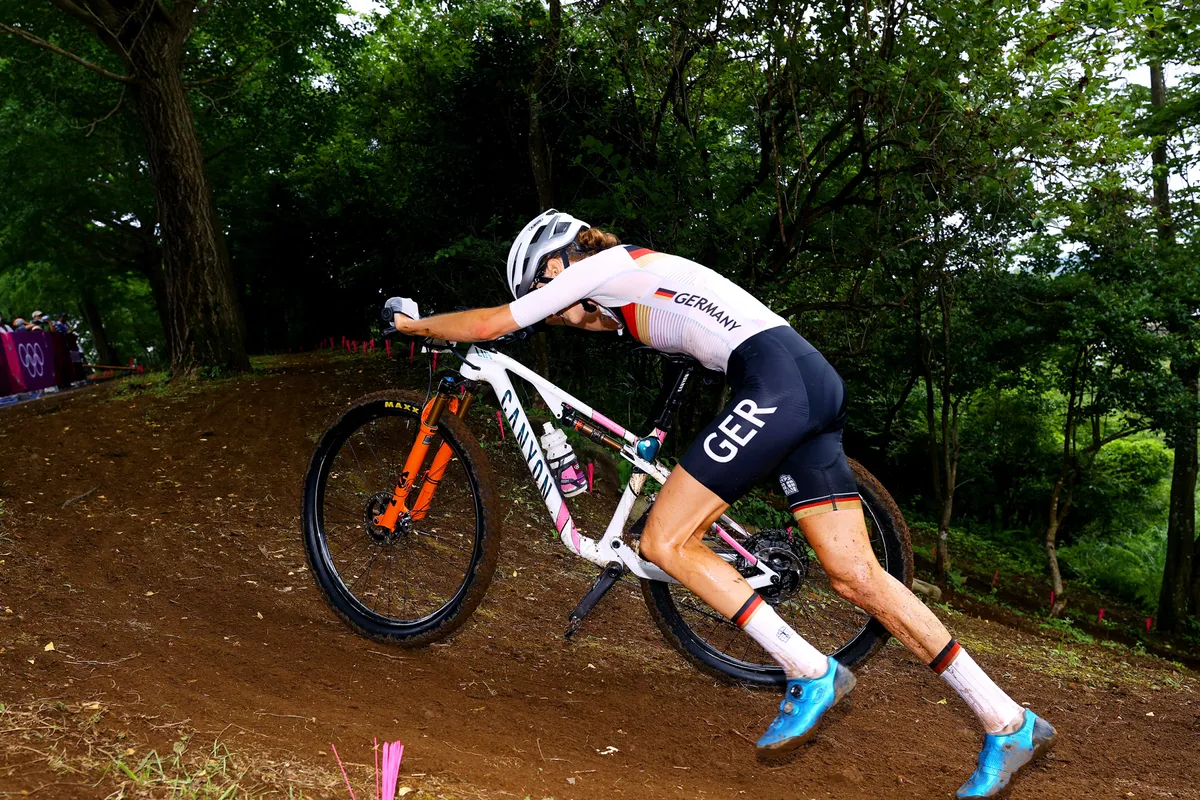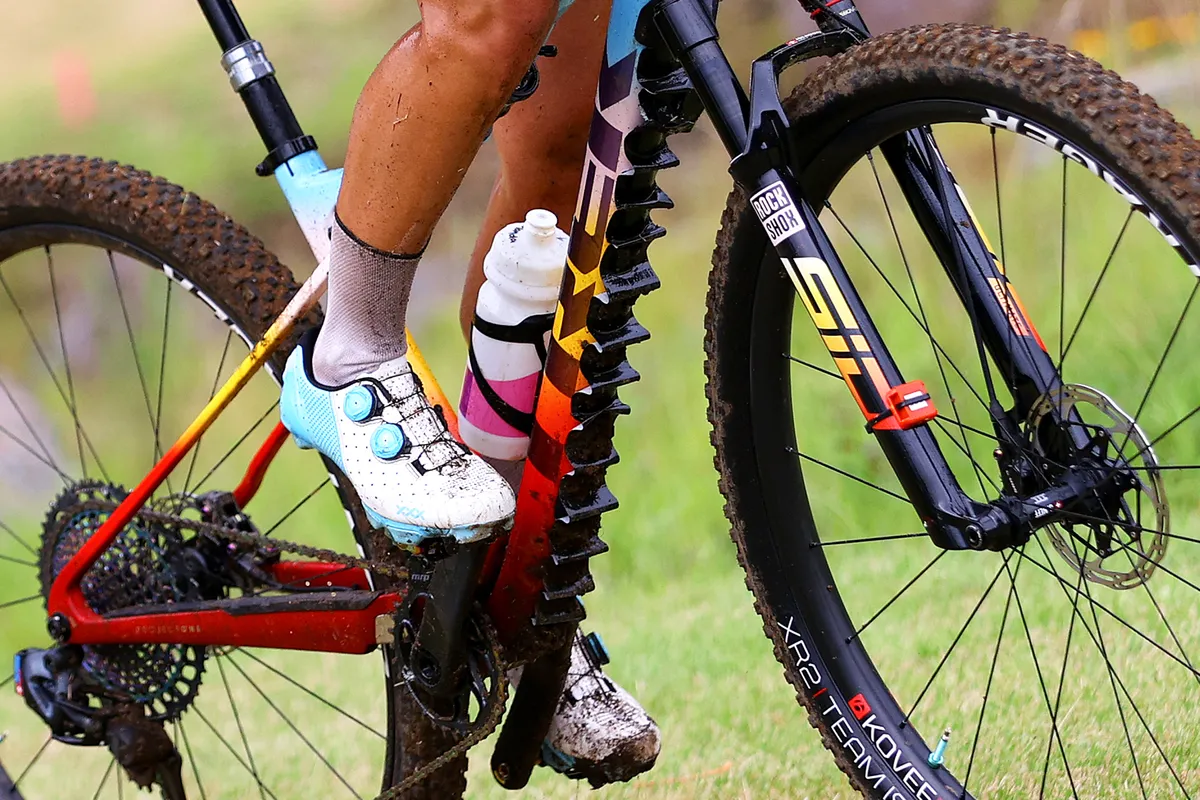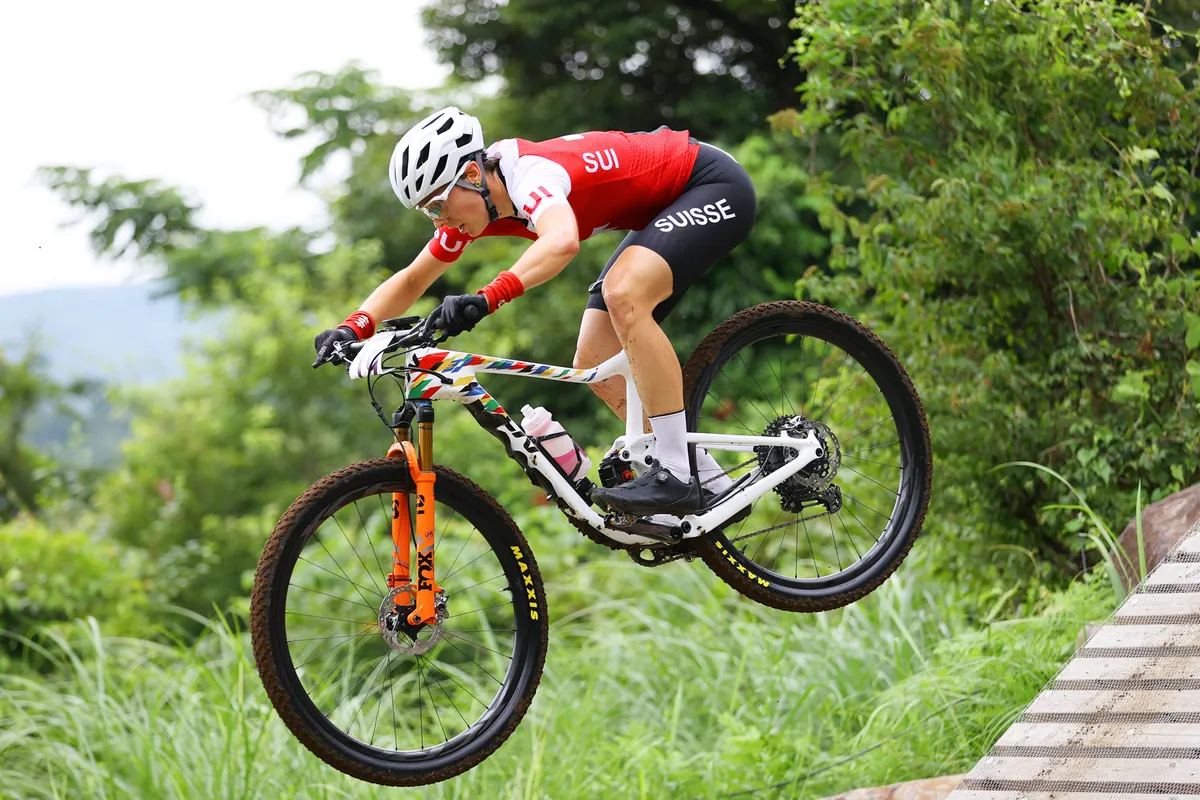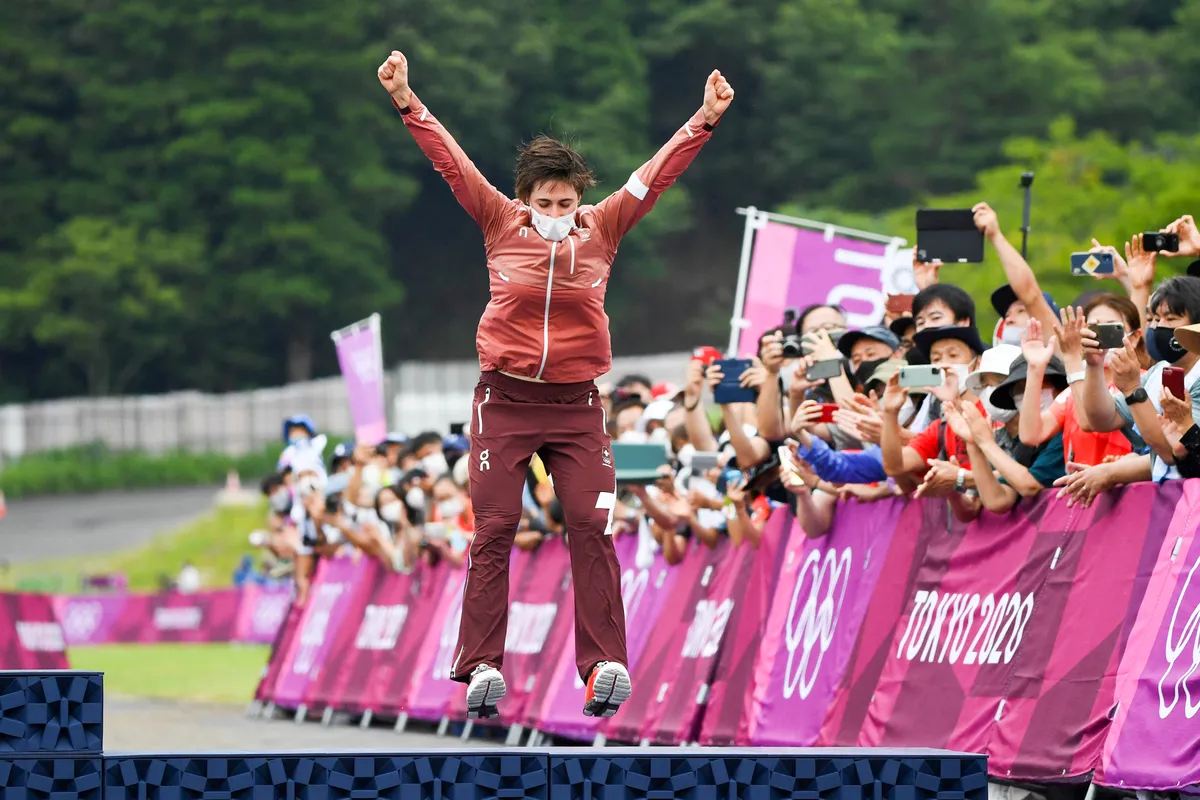As some of the earliest events to take place at the Tokyo 2020 Olympic Games, the men’s and women’s mountain bike races are already in the books, with Great Britain’s Tom Pidcock and Switzerland’s Jolanda Neff pulling off commanding rides to take the gold medal in their respective races.
Both races proved to be dramatic, with crashes, mechanical issues and, in the case of the women’s race, challenging weather conditions significantly affecting the final outcome.
The Izu MTB Course lived up to its billing and tested each rider’s skill and equipment to the limit, with steep, loose climbs and the kind of drops we’re more used to seeing on downhill courses.
With such a demanding track to negotiate, riders and team staff had to be smart in their equipment choices in order to build the fastest bikes possible, so let’s take a look at some of the most notable tech that was put to good use by the world’s cross-country racing elite.
1. A full-suspension track
The first obvious trend was the abundance of full-suspension bikes throughout both fields. In fact, almost every athlete in both the men’s and women’s races lined up on bikes with at least some rear suspension.
While this has become the norm on the men’s World Cup circuit, it’s a little more unusual to see so many in the women’s field.
For example, Ukraine’s Yana Belomoina normally rides an American Eagle hardtail – and did so for Rio 2016 and the Tokyo test event – but switched to a full-suspension bike for the women’s race.
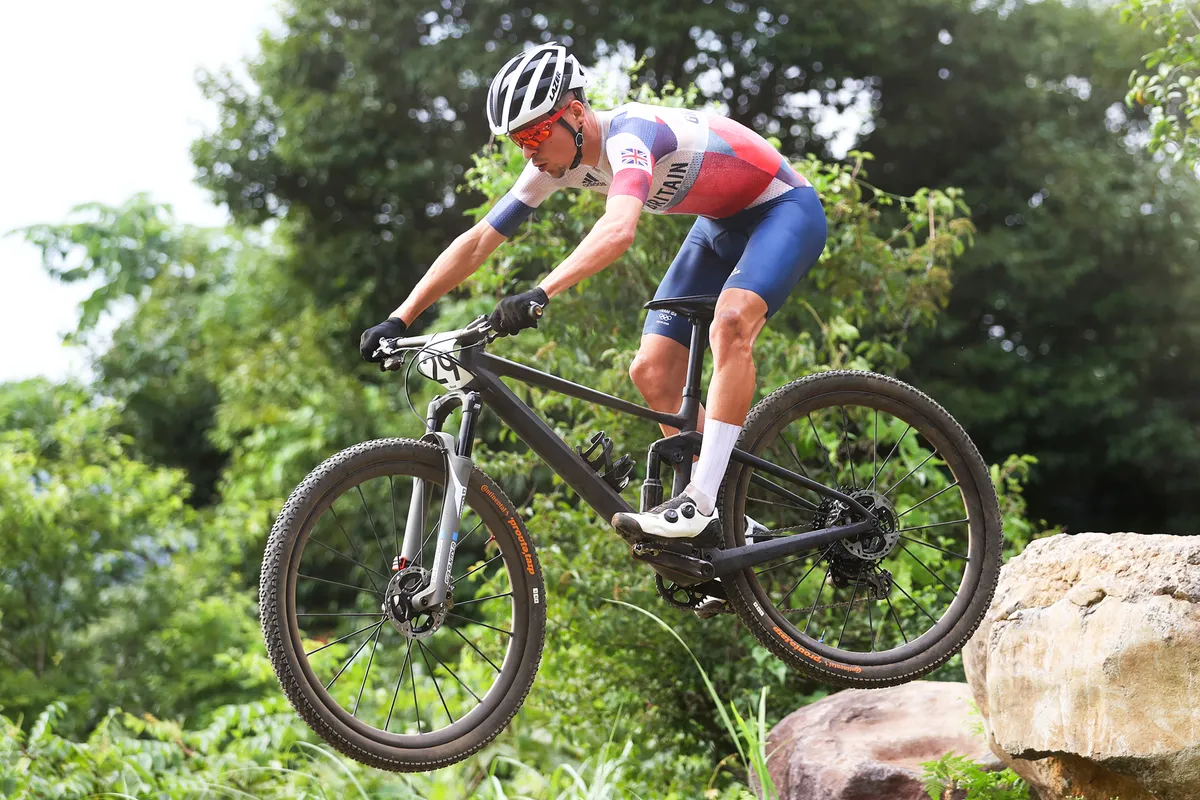
Meanwhile, Pidcock took victory in the men’s event on an unbranded BMC Fourstroke; a classic cross-country full-suspension bike with 100mm of rear travel.
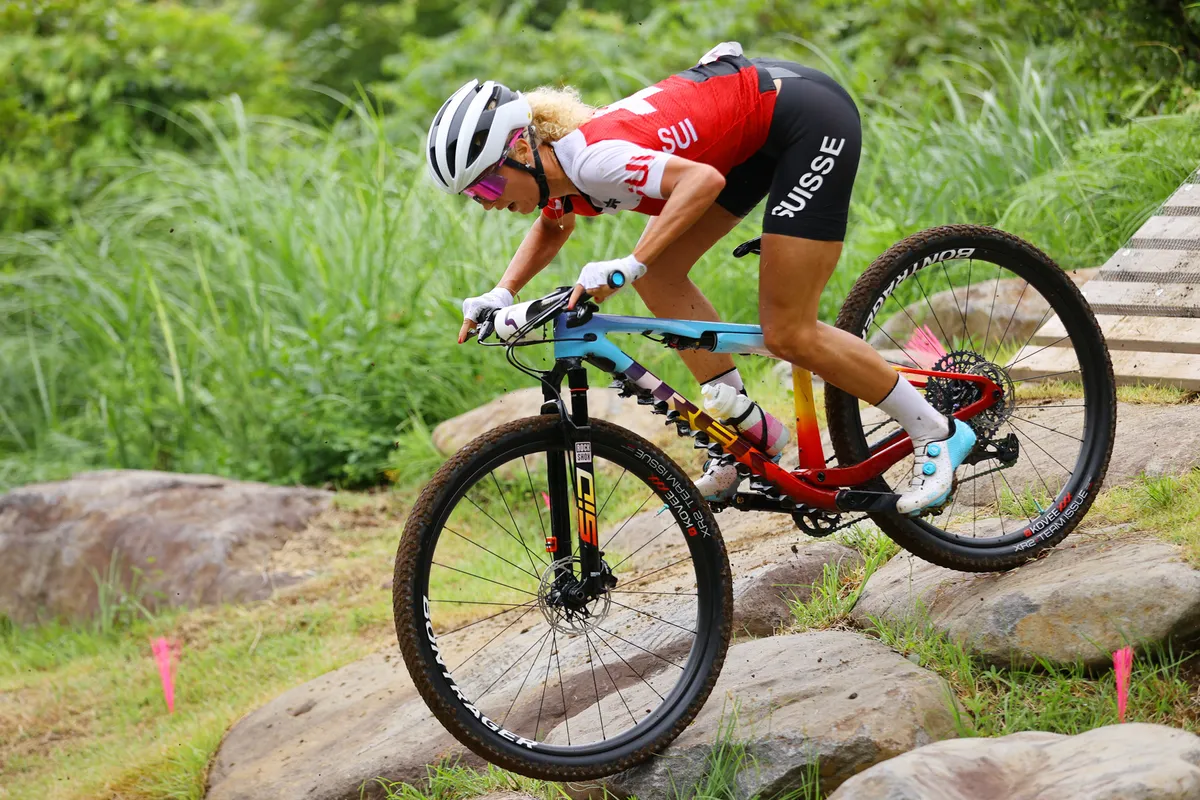
In the women’s race, Jolanda Neff rode to gold aboard her custom-painted Trek Supercaliber, a bike that, interestingly, sits between a pure full-suspension bike and a hardtail with just 60mm of what Trek calls “structural suspension” at the back.
Defending champion Nino Schurter, as well as other Scott-sponsored athletes, rode aboard the brand’s newly-designed 2022 Scott Spark full-suspension bike, which features 120mm of rear travel hidden within the frame, paired with a burly 120mm fork (we’re used to seeing up to 100mm forks in cross-country racing).
2. Drops and dropper posts

Along with the almost exclusive use of rear suspension in both races, most bikes were fitted with dropper seatposts, which is in stark contrast to even the previous Olympic Games in Rio de Janeiro, where dropper posts weren’t yet widely used in MTB cross-country competition.
The ability to get the saddle out of the way was clearly helpful for the big drop in the middle of the lap, as well as the track’s main rock garden.

However, a dropper also arguably proved advantageous for the wide-open turns on the grassy areas too, where riders were able to lower their centre of gravity and lean the bike over to position themselves better for fast, stable cornering.

Neff used a wireless, electronically-activated RockShox Reverb AXS post, while Pidcock took advantage of his BMC Fourstroke’s sleek and lightweight dropper post, which is integrated into the frame itself.
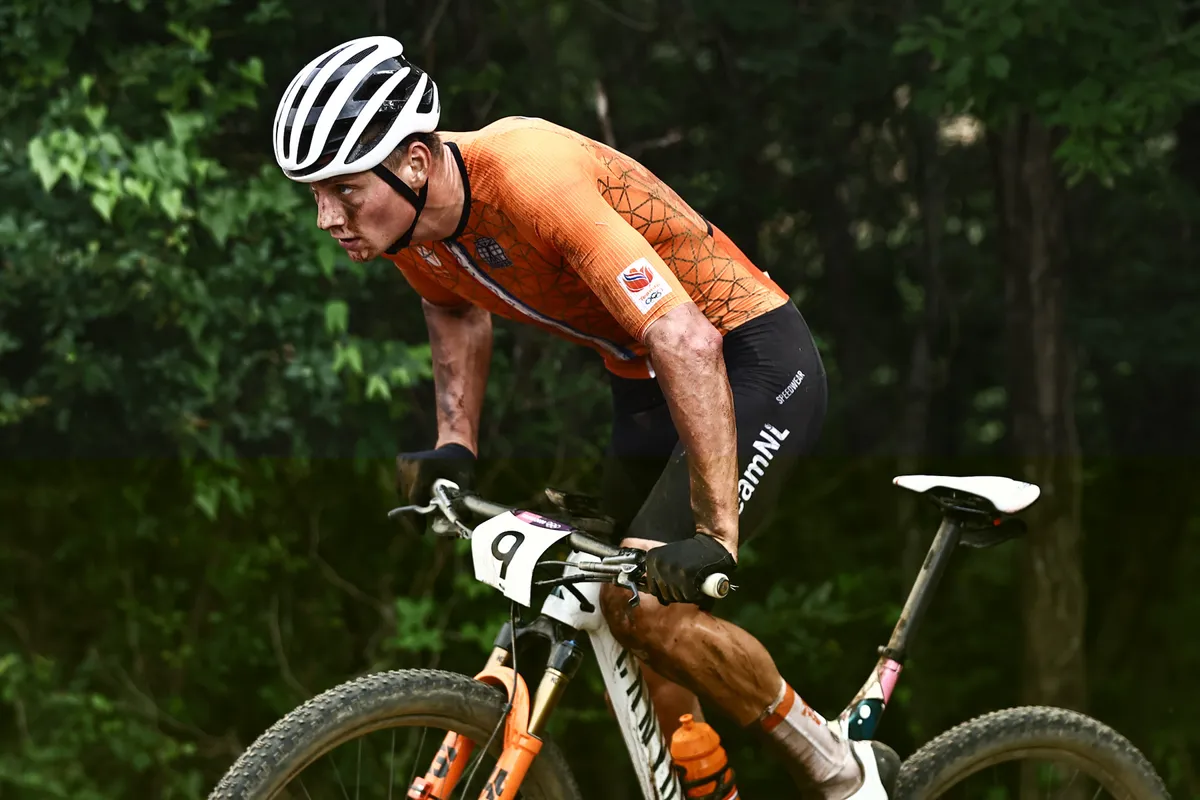
Mathieu van der Poel, the pre-race favourite in the men’s event, was among the few riders not to use a dropper post. The XC/cyclocross/road crossover star is known for not using a dropper on his Canyon Lux full-suspension bike.
Ultimately, van der Poel crashed out early in the race, saying he didn’t know a ramp installed for practice would be removed for the race itself.
3. Big sprockets, small chainrings

A key characteristic of the Izu course was the short, steep climbs and there’s no doubt the large gear ranges now made possible by the development of 12-speed mountain bike groupsets were heavily relied upon.
That included the Shimano XTR M9100 drivetrain ridden by Pidcock and silver medallist Mathias Flückiger, and SRAM’s Eagle XX1 fitted to Neff’s bike.
Towards the front of the drivetrain, we also saw relatively small chainrings used in both races (we expect a 34-tooth chainring would have been a common choice), where low gearing was clearly prioritised over high-speed pedalling, so riders could maintain speed and momentum on the steep climbs throughout the lap.
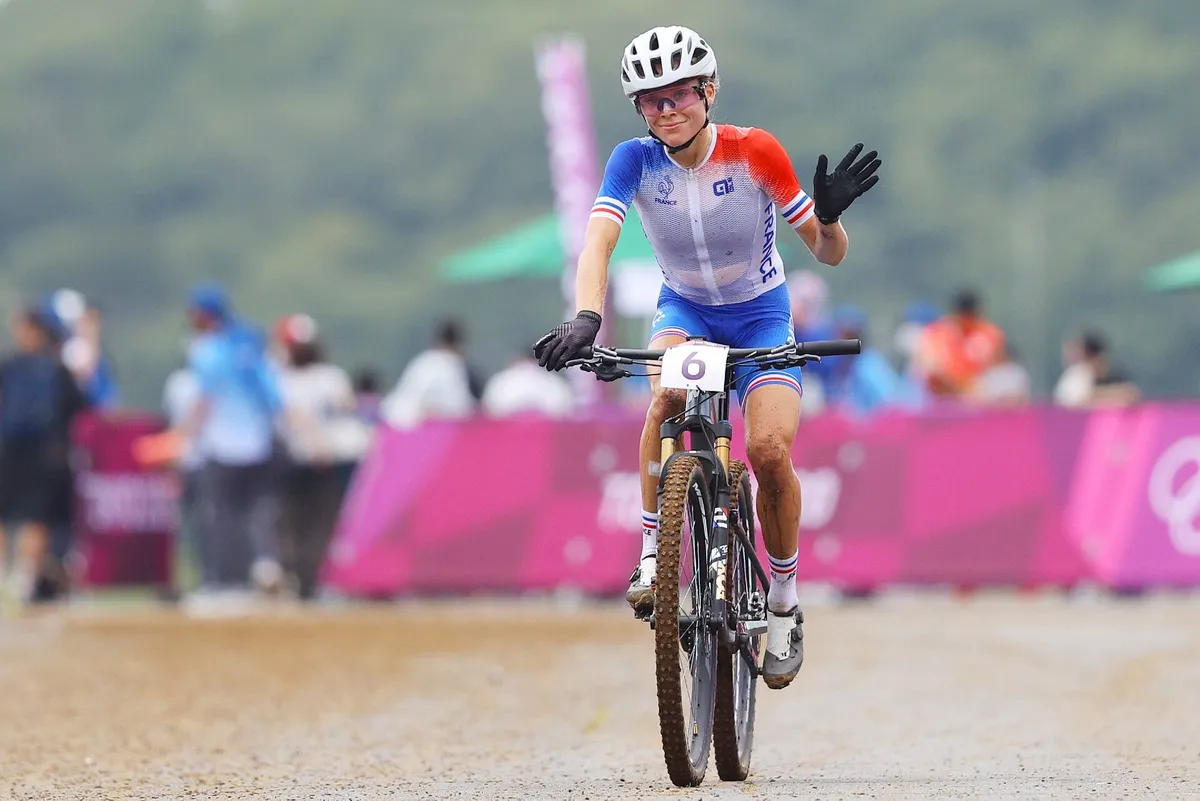
Modern chainrings use a narrow-wide pattern on the teeth to help retain the chain, combined with a clutch on the rear derailleur to help prevent the chain from becoming slack over bumpy terrain.
Even so, this design isn’t 100 per cent secure, especially on very bumpy courses, and indeed we saw French contender Loana Lecomte lose time towards the end of the race with a dropped chain.
4. Managing the mud
A key difference between the men’s and women’s races were the conditions on track, with dry and dusty conditions for the men and lots of slippery mud for the women.
In response, some of the women’s mechanics used creative solutions to deal with the conditions.
Clear to see on Neff’s bike was the addition of duct tape on the down tube, laid out as a long, wavy strip to prevent mud from being able to stick to the frame and weigh the bike down.
This trick was also seen in the recent World Cup at Les Gets on the bikes of both the Scott-SRAM and Cannondale teams.
5. Tough tyre choices

The number of tyre setup variables, including MTB tyre pressure, casing, width and tread pattern, will likely have made for tricky decisions on the day.
The dusty conditions of the men’s race and the slippery wet conditions of the women’s event meant that the ideal tyre was quite different for each.
A deeper, spikier tread will have provided better traction in deep dirt and on the muddier sections of the women’s race, but would have been far from ideal on the track’s slick rocky sections, not to mention the increased rolling resistance over the whole race.
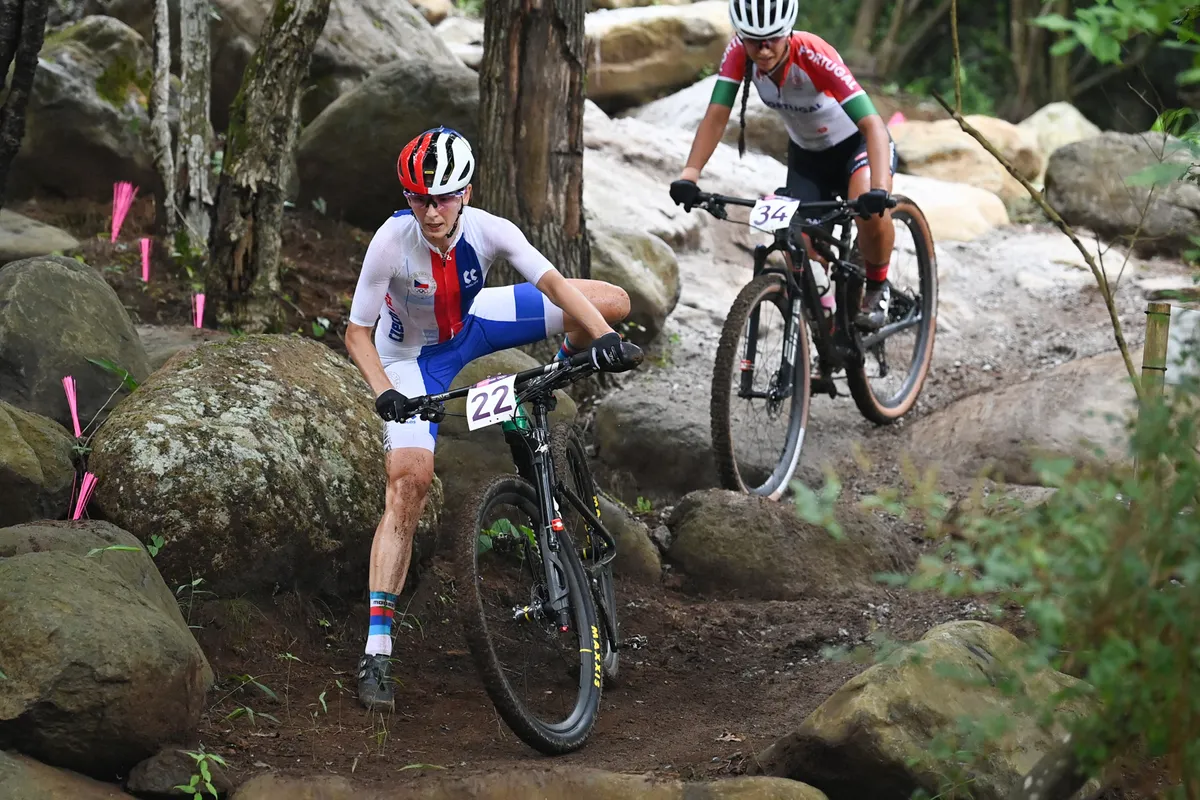
We saw a costly mistake from France's Pauline Ferrand-Prevot due to a loss of grip, with the bike slipping out from under her on a short rocky uphill section. Whether this could have been prevented with a different model of tyre or pressure setting is hard to say.
Pidcock was using prototype tyres from Continental, which were developed for the race in conjunction with the German brand.
Continental told us it worked closely with Pidcock and his team to create a new tyre based on the popular Race King tread pattern, but paired with a different casing to increase comfort, grip and puncture protection, without adding much to the tyre’s weight.
The perfect Tokyo 2020 mountain bike
While athletes are, for the most part, obliged to use sponsored equipment from their trade and national teams in the Olympic race, what might a perfect Tokyo 2020 mountain bike setup have looked like without those restrictions?
A full-suspension frame is the obvious starting point, with every medal-winning rider in the men’s and women’s races standing on the podium with the aid of rear suspension. For bonus points, make sure that frame is custom-painted in a unique Olympics-inspired design, just like those ridden by the Trek-sponsored athletes and women’s bronze medallist Linda Indergand’s Liv Pique.
In terms of drivetrain, a wide gear range will enable speed on the flatter, faster sections of the track, but specifically a large rear sprocket at the back and a reasonably small chainring (e.g. 34 teeth) up front for those short, sharp climbs.
Adding a lightweight dropper seatpost is a no-brainer and allows for better positioning and greater control over the drops and jumps of the Izu course.
A lightweight yet fairly wide wheelset for fast acceleration, paired with dry or intermediate tyres would work well, pumped up to a little higher pressure than normal to help prevent burping or rolling the tyres on big hits and tight turns.
Finish off the bike with an integrated bar/stem at the cockpit (Pidcock, Neff and Schurter were all running some form of one-piece bar and stem combination) that comes with a relatively short stem length for the tight, twisty nature of the course and that would be a bike fit for making an Olympic medal bid.

